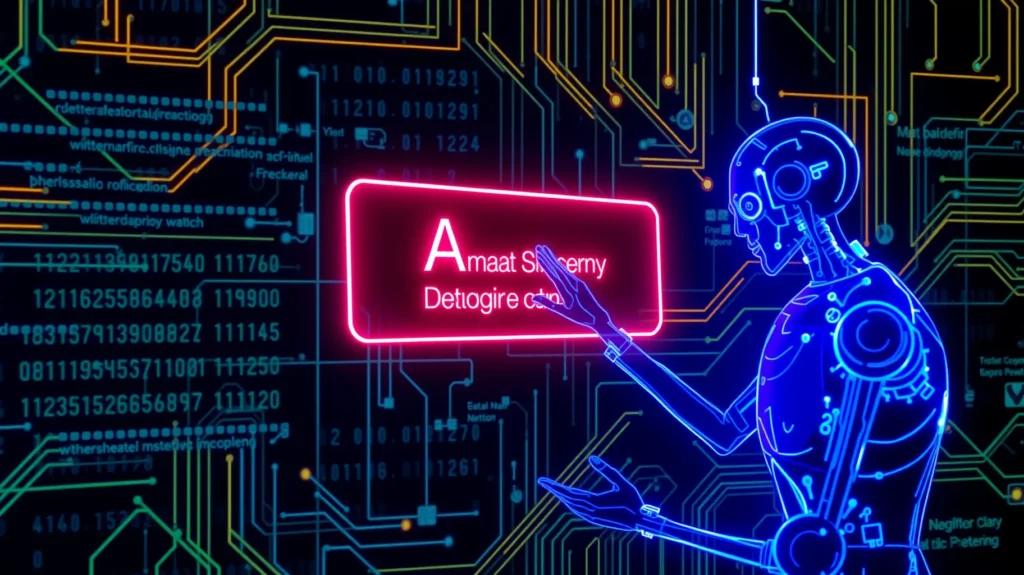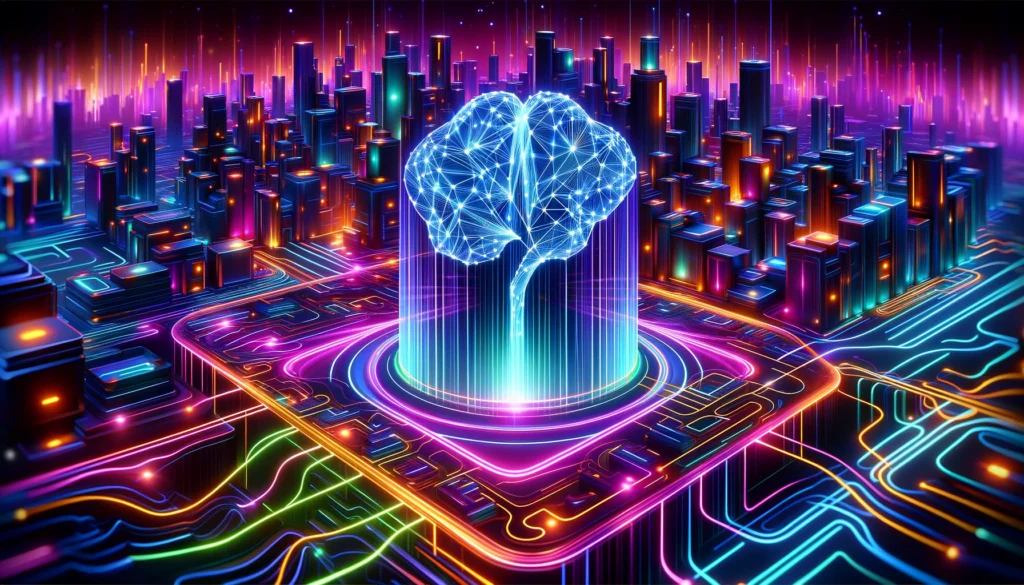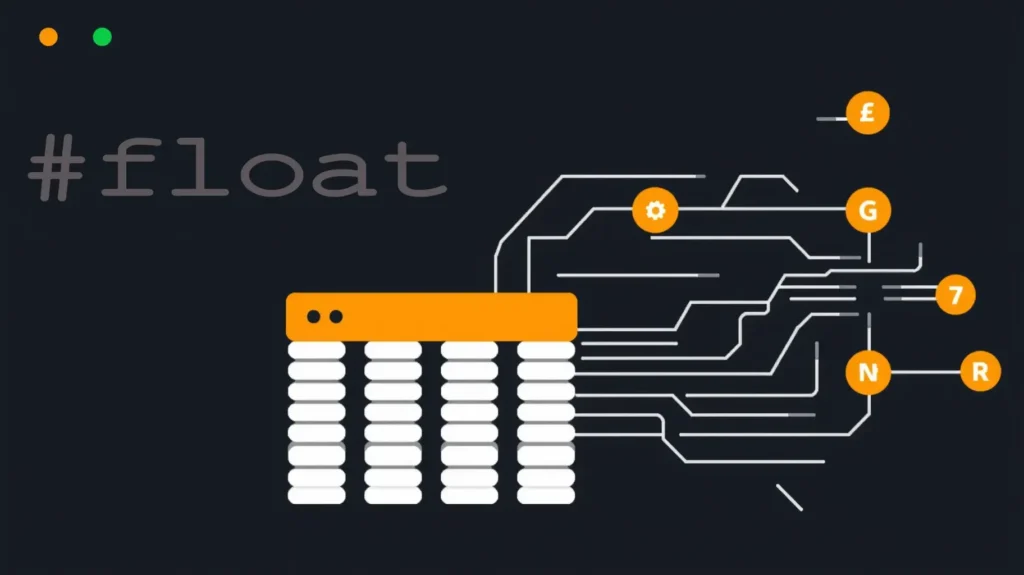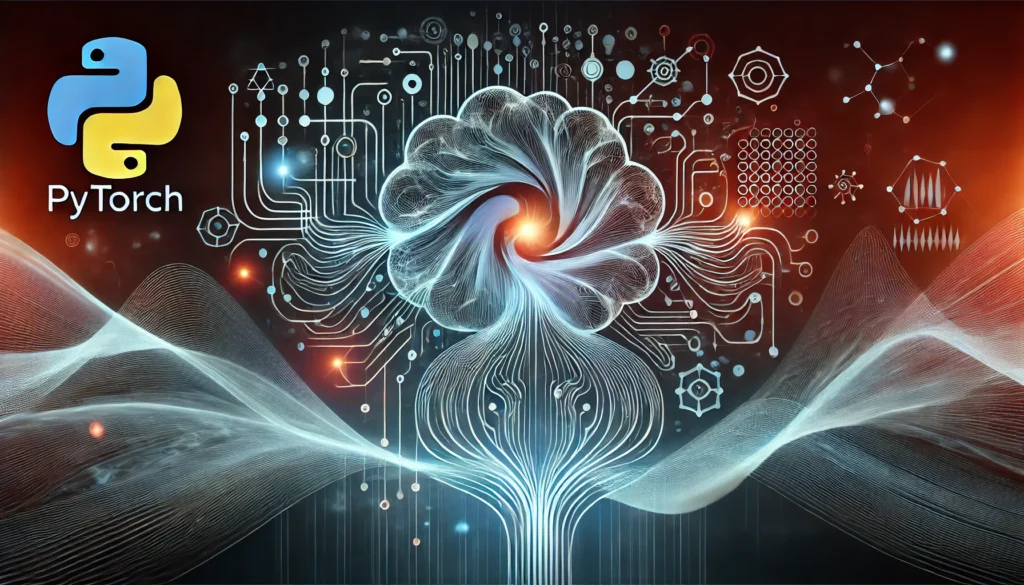
What is an AI-Driven Game Character?
Before we dive into the nitty-gritty of creation, let’s clarify: AI-driven game characters are characters in video games that think and act with some level of autonomy. They’re not just scripted to follow set paths or instructions—they make decisions on the fly, react to their environment, and can often adapt to players’ behaviors. Think of them as a clever NPC that can surprise you with its intelligence.
This technology has been evolving for decades, and today, it’s powerful enough to create characters that feel almost alive. They can learn, adapt, and provide a more dynamic and immersive experience for players.
Why AI Characters Are Revolutionizing Games
AI has become a game-changer (literally). It’s no longer just about coding a basic enemy to chase you in straight lines. Now, AI can make enemies that strategically plan attacks, allies that adjust their behavior based on your actions, or even entire game worlds that evolve based on the characters’ intelligence.
A key reason this is such a breakthrough is that AI can keep players engaged for longer. Instead of repeating the same behaviors, AI-driven characters provide an unpredictable experience. Players don’t just memorize patterns—they have to think on their feet, creating an ever-evolving challenge. And it’s not just about combat; AI can power companions, merchants, or even ambient wildlife, adding layers of depth to a game’s world.
The Basics of AI in Game Design

Creating an AI game character begins with understanding the foundational concepts. At its core, AI in games relies on algorithms that simulate intelligence. These algorithms are designed to mimic human-like behaviors, from basic actions like pathfinding (deciding how a character moves around obstacles) to more complex decisions, such as selecting strategies in combat.
A few key concepts that form the foundation of AI in games include:
- Pathfinding Algorithms (such as A* and Dijkstra’s)
- Finite State Machines (FSM) for basic decision-making
- Behavior Trees for more complex decision logic
- Utility AI, which determines the best action based on multiple factors
For an AI character, these frameworks decide everything from how they walk and talk to how they make crucial decisions.
Tools You Need to Build AI Game Characters
Before jumping into the actual design, you’ll need the right tools. Here’s a shortlist of essentials:
- Game Engine: Unity or Unreal Engine are two of the most popular options for building games with AI characters. Each has powerful AI frameworks built-in, allowing you to focus on creativity rather than starting from scratch.
- Programming Languages: Depending on your engine, you’ll need knowledge of C# (for Unity) or C++ (for Unreal Engine) to write the AI logic.
- AI Middleware: Tools like RAIN or xAIToolkit can speed up the process by providing pre-built AI behaviors and structures.
- Machine Learning Frameworks: If you’re diving into more advanced AI, frameworks like TensorFlow or PyTorch are key for training AI characters that can learn from player behavior.
Choosing the Right Game Engine
Choosing the right game engine is crucial, as it can determine how much flexibility you have in designing your AI character. Let’s break down two popular options:
- Unity: Unity offers a flexible AI framework, and thanks to its popularity, there’s a wealth of documentation and third-party tools available. It’s great for developers at all levels. Its NavMesh system handles pathfinding for AI characters efficiently.
- Unreal Engine: Unreal provides a powerful AI system with Behavior Trees, Blackboards, and Perception Systems. It’s ideal for creating sophisticated AI with minimal coding. Unreal’s visual scripting system (Blueprints) can also streamline AI development for non-programmers.
Both engines can handle complex AI systems, but if you prefer a less code-heavy approach, Unreal Engine’s Blueprints might be your best bet.
Understanding Character Behavior Models
Once you have your engine and tools ready, it’s time to dive into behavior modeling. An AI character’s behavior model defines how they react in specific situations. Are they aggressive, cautious, or neutral? Do they attack immediately, or do they scout first?
There are several approaches to this, but one of the most popular is the Finite State Machine (FSM). In an FSM, your character can be in one “state” at a time—like idle, searching, or attacking. Depending on certain conditions (like spotting the player or taking damage), they’ll transition to another state.
FSMs are simple yet powerful. They allow for predictable, easy-to-debug behavior but can sometimes feel a bit too rigid. If you want more fluid, nuanced behavior, Behavior Trees might be a better option. These allow for more complex decision-making and give your characters more depth in their actions.
Creating a Personality for Your AI Character

Giving your AI-driven game character a distinct personality is essential to making them more relatable and engaging. Personality traits influence how they interact with the player and the game world. Are they brave or cowardly? Loyal or selfish? These choices will dictate how they behave in a variety of situations.
To design a compelling personality:
- Assign key traits: For example, an aggressive character may charge into battle, while a cautious one hangs back and waits for the right moment.
- Set behavior priorities: Brave characters might prioritize offensive actions, while timid ones may flee when threatened.
- Create variability: No one likes a character that always does the same thing. By adding small chances of unexpected behaviors, you give the character depth.
The key to making this personality come alive lies in blending randomness with rules. While an AI character might tend to follow a set pattern of actions, a sprinkle of unpredictability will make them feel more human.
Programming AI Character Movement
Movement is a critical aspect of any AI character. No one wants a clunky or awkward NPC ruining the immersion. To make AI-driven characters move smoothly, you’ll need to implement pathfinding algorithms that ensure they navigate the game world effectively, avoiding obstacles and getting to their destination in a natural way.
Most game engines, like Unity and Unreal, come with built-in tools like NavMesh, which automatically calculates the best route for your AI characters. But it doesn’t stop at basic pathfinding! Movement must also feel realistic, incorporating:
- Acceleration and deceleration: Characters shouldn’t go from zero to sprint instantly.
- Turning speeds: Sharp, robotic movements can break immersion.
- Awareness of surroundings: AI characters should avoid bumping into walls or walking into other characters.
By ensuring smooth and intelligent movement, your AI character will feel like a true part of the game world, not just a wandering bot.
Incorporating Decision-Making Algorithms
The heart of an AI character lies in its ability to make decisions. Decision-making algorithms allow your character to evaluate their environment and take action based on what’s happening. There are different ways to approach this, depending on the complexity you want.
For simple behaviors, Finite State Machines work well. However, for a more nuanced character, you’ll want to explore Utility AI. This system ranks possible actions based on the situation, choosing the most “useful” one. For example, a character might prioritize finding cover when health is low, but charge if they have a powerful weapon.
- Branching decision trees are also a great way to handle complex AI choices. These trees simulate thought processes, allowing the character to weigh options like attacking, fleeing, or helping another player.
The key is to balance depth and speed. Your decision-making algorithms shouldn’t slow down the game but should still allow for realistic, dynamic responses.
Training AI to React to Player Actions

The real magic happens when an AI character reacts intelligently to player actions. Players want to feel like their choices matter, and AI characters that adapt to them create a more immersive experience. This might mean enemies that change strategies based on how aggressive the player is or allies that grow more helpful when they see the player struggling.
To achieve this, consider incorporating:
- Player tracking: Monitor what the player does—like how often they attack or retreat—and have the AI adjust its behavior in response.
- Adaptive difficulty: Make your AI characters get smarter as the player gets better, preventing frustration or boredom.
- Emotion simulation: Some AI characters can display emotions, like fear or anger, based on player actions. A friendly AI might grow attached to the player over time, changing their behavior based on this connection.
The more responsive your AI, the more the player will feel like they’re interacting with a living, thinking character.
Using Machine Learning to Enhance Character Intelligence
If you want to push your AI-driven character to the next level, you can integrate machine learning (ML) techniques to create characters that learn from player behavior over time. Machine learning enables your AI to adjust its strategies and become more intelligent based on past experiences, creating a truly dynamic interaction.
Here’s how machine learning can improve AI intelligence:
- Reinforcement learning: This allows your AI character to “learn” from successes and failures. For instance, if a character constantly fails in combat, it can adjust its tactics.
- Neural networks: With enough training data, you can create characters that predict the player’s next move, making gameplay feel even more reactive.
- Pattern recognition: Machine learning helps characters notice trends in the player’s behavior—like when they tend to dodge or attack—and adapt accordingly.
While implementing machine learning can be more complex than traditional AI, it provides a unique opportunity for ever-evolving, smart AI that feels both challenging and lifelike.
Balancing Realism and Playability in AI Design

When creating an AI-driven game character, it’s crucial to strike the right balance between realism and playability. Too realistic, and the AI might become too unpredictable or even frustrating for players. Too simple, and it feels like just another scripted NPC with no depth. The key lies in crafting characters that behave believably but still serve the overall fun and flow of the game.
Here are some important factors to consider:
- Limiting AI knowledge: While the AI can “see” everything happening in the game world, limiting its access to information (like a player’s exact location) creates a more natural, fair experience.
- Imperfection is key: Real humans make mistakes, and so should your AI. Adding some randomness or hesitation can make the character feel more alive.
- Player control: Letting players outsmart AI characters shouldn’t feel impossible. Too-smart AI can sometimes lead to frustration, so balance their intelligence with weaknesses that players can exploit.
In the end, playability should always come first, but finding ways to weave in realism will make your AI feel engaging and dynamic.
Integrating AI with the Game World
For your AI-driven character to truly come to life, they must be well-integrated into the game world. This means they shouldn’t just exist in a vacuum; their behavior should interact with environmental factors like terrain, objects, and other characters.
Key aspects to consider include:
- Terrain awareness: AI characters should navigate different landscapes intelligently—taking cover, avoiding hazards, and choosing optimal paths.
- Interacting with objects: Whether it’s picking up items, using tools, or opening doors, AI needs to manipulate the environment just as a player would.
- Responding to the game’s ecosystem: If you’ve got animals, weather, or dynamic environments, AI characters should react to these changes, like seeking shelter in a storm or hunting for food if it’s scarce.
When the AI interacts naturally with the game world, it can create a more immersive experience, drawing players deeper into the narrative.
Debugging and Testing Your AI Character
Once you’ve designed your AI character, it’s time for the nitty-gritty part: debugging and testing. AI can be notoriously tricky to test because it involves so many layers of behavior and logic. You’ll want to test thoroughly to ensure that your characters act as expected and that no strange glitches or bugs ruin the experience.
Steps to successfully debug your AI:
- Test each behavior individually: Run small-scale tests to ensure every aspect—from pathfinding to combat—is working as it should.
- Simulate edge cases: Consider what happens in extreme scenarios. What does the AI do when it’s cornered, or when it has no weapons? These edge cases can expose weaknesses in your logic.
- Player feedback: Let actual players interact with the AI and observe how they respond. Players might find behaviors that aren’t immediately obvious in testing.
Debugging is crucial because no matter how smart your AI, a glitchy or robotic response will break immersion. The more you test, the smoother and more natural your AI-driven character will behave.
Fine-Tuning AI Interactions for Immersive Gameplay
Once your AI character is up and running, the next step is to fine-tune interactions. Even minor tweaks can significantly enhance immersion and gameplay. By adjusting how your character behaves in relation to other AI characters or the player, you can create deep, meaningful encounters.
Some areas to focus on include:
- Dialogue and speech patterns: If your AI character talks, adjust their dialogue based on player actions or evolving in-game situations. Dynamic conversations feel more organic.
- Context-aware reactions: The AI should be able to recognize what’s happening in the game and react accordingly. If an ally is injured, they might rush to help; if they’ve just seen something strange, they might comment on it.
- Emotional shifts: Consider giving your AI characters a sense of mood or emotion that changes over time, based on their experiences with the player. A long-time ally might become more protective, while an enemy might get angrier if continuously defeated.
This kind of fine-tuning adds layers of realism to the character, making them feel less like a set of rules and more like a thinking, feeling part of the world.
How to Improve AI Performance Without Overloading Your Game
A major challenge in creating AI-driven characters is optimizing their performance. AI can be resource-intensive, and if too many complex algorithms are running at once, your game might suffer from lag or performance drops. Balancing intelligence and speed is key to keeping everything running smoothly.
Here are some techniques to improve performance:
- Lod-based AI logic: You can implement level of detail (LOD) logic, where distant or off-screen AI characters use simplified behaviors, saving processing power for those closer to the player.
- Selective updates: Rather than updating the AI logic every frame, you can stagger the updates. Only the characters currently interacting with the player need full real-time updates.
- Simplify when possible: Even though sophisticated AI is great, avoid unnecessary complexity where a simpler solution will work. Sometimes, an illusion of intelligence can be just as effective as the real thing!
By optimizing how your AI operates, you can maintain smooth gameplay without compromising on the depth of the character’s behavior.
Using AI to Create Dynamic, Evolving Characters
One of the most exciting possibilities with AI-driven game characters is the ability to create dynamic and evolving characters. These characters don’t just follow pre-programmed scripts; they grow, change, and adapt based on player actions and in-game events. It adds a layer of depth to your game, making every playthrough unique.
To design evolving AI characters:
- Experience-based growth: Just like the player gains experience, your AI characters can “learn” from their interactions, becoming more skilled, changing their strategies, or even altering their personalities.
- Memory systems: Allow AI characters to remember past events or player interactions. This could lead to a friend turning into a foe if they’re betrayed, or an enemy becoming an ally after being spared.
- World-impacting decisions: As AI evolves, their decisions can ripple out, affecting the game world itself. They may take control of territories, start wars, or change allegiances, creating an ever-changing game landscape.
By designing AI characters to evolve dynamically, you create more replayability and give players a reason to engage deeper with the characters. This complexity makes the game world feel truly alive.
Pitfalls to Avoid When Designing AI Characters

While crafting an AI-driven character can be incredibly rewarding, it’s easy to fall into some common traps. Here are a few pitfalls to avoid to ensure your AI characters are both fun and functional:
- Overcomplicating the AI: It’s tempting to make your AI super-intelligent, but sometimes less is more. AI that behaves too perfectly can feel robotic or unfair, especially in combat. Players should be able to predict and outsmart AI occasionally.
- Lack of personality: Even if an AI is functionally intelligent, it can feel dull without personality. Make sure the character has quirks or traits that set them apart from others, creating emotional connections with players.
- Overloading performance: AI systems that demand too much computational power can lead to frame drops or lag, ruining immersion. Always balance complexity with performance.
- Ignoring player feedback: AI behavior should take into account the player’s actions, even if the AI is supposed to be independent. If AI characters ignore the player completely, the game can feel disconnected.
By avoiding these mistakes, your AI characters will feel smarter, more responsive, and ultimately more enjoyable to interact with.
Future Trends in AI-Driven Game Characters
As AI technology advances, so too does the potential for AI-driven game characters. The future promises even smarter, more lifelike characters that can engage players in increasingly complex ways.
Here are a few trends on the horizon:
- Emotional AI: Future AI will likely have the ability to detect player emotions through gameplay (and even voice or facial expressions) and adjust their responses accordingly. Characters might react with empathy, anger, or curiosity based on how the player is feeling.
- Procedural storytelling: AI could drive entire game narratives, creating custom storylines for each player. This would mean no two playthroughs would ever be the same, with the AI dynamically generating quests, dialogue, and even entire worlds based on player choices.
- Deeper machine learning integration: With machine learning, AI could continually improve its gameplay interactions. Characters could learn long-term from thousands of player interactions across the world, becoming smarter and more challenging with each patch or update.
These trends will push the boundaries of game design, creating even more immersive and intelligent worlds.
How AI Characters Can Elevate Player Engagement
One of the biggest reasons developers invest in AI-driven characters is to boost player engagement. When players interact with an AI character that behaves believably and reacts to their actions, it enhances the emotional connection, making the game more compelling.
Here’s how AI elevates engagement:
- Unpredictable interactions: AI characters keep players on their toes by responding dynamically rather than following predictable patterns. This unpredictability challenges players and keeps the gameplay fresh.
- Emotional investment: AI characters that change and evolve based on how the player treats them can foster strong emotional connections. Players are more likely to care about characters they’ve influenced directly.
- Replay value: AI that adapts to player behavior makes each playthrough different. Players are encouraged to come back and try new strategies, knowing that the AI will offer a fresh experience each time.
By using AI to create interactive, evolving, and engaging characters, developers can ensure their games stand out and keep players coming back for more.
Best Practices for AI Character Development
To wrap things up, let’s explore some best practices for developing successful AI-driven game characters:
- Start small, build up: Begin with simple AI behaviors before adding complexity. A strong foundation ensures you can scale up without breaking the system.
- Test constantly: As you develop your AI character, test frequently with actual gameplay scenarios. This ensures your AI reacts naturally in different situations and doesn’t become too overpowered or predictable.
- Prioritize the player experience: Remember that your AI character is part of the player’s journey. Every behavior or decision should contribute to the player’s immersion and enjoyment.
- Refine through feedback: Use player feedback and in-game data to adjust your AI’s behavior. Players will spot things you might miss, and they can help you fine-tune your AI to perfection.
By following these best practices, you can design AI characters that not only challenge players but also enhance the storytelling and overall game experience.
Real-World Examples of Successful AI Game Characters
The world of gaming is full of AI-driven characters that have left a lasting impact on players. These characters aren’t just opponents or allies—they feel alive, adaptive, and memorable. Let’s look at a few standout examples that showcase the potential of AI in game design:
- The Nemesis System in Middle-Earth: Shadow of Mordor
The Nemesis System revolutionized how AI characters could evolve. In this game, enemy orcs remember past encounters with the player, growing stronger or developing grudges based on how battles play out. Each interaction with the player changes their personality, strengths, and strategies, making every enemy encounter feel personal. - Elisabeth from Bioshock Infinite
Elisabeth is a non-playable character (NPC) who assists the player throughout the game. What made her special was her dynamic AI that allowed her to adapt to player needs in real time—providing resources, opening doors, or commenting on the environment. She felt intelligent, reactive, and essential without ever becoming a burden to gameplay. - The AI Opponents in Halo: Combat Evolved
The enemy AI in the Halo series was designed to cooperate and behave strategically. Enemies would use cover, flank the player, and retreat when injured. This created an AI system that felt challenging but fair, and players felt rewarded for outsmarting the game. - Alien from Alien: Isolation
The xenomorph in Alien: Isolation is a prime example of adaptive AI. Unlike most enemies, it doesn’t follow pre-scripted paths. Instead, it learns the player’s tactics, reacts to their behavior, and becomes more unpredictable over time. This creates a terrifying and immersive experience where players must constantly adapt to survive. - The Sims in The Sims Series
The Sims themselves are iconic AI characters. These virtual people have their own needs, desires, and personalities, reacting to the player’s choices as well as other Sims’ behaviors. The intricate AI design allows each Sim to feel unique, providing endless possibilities and replayability for players.
These real-world examples demonstrate the power of AI-driven characters in enhancing immersion, creating dynamic gameplay, and fostering emotional connections with players. The best AI characters are those that behave in unpredictable yet believable ways, keeping players engaged and invested in their journeys.
Resources
Game Engines with Built-in AI Capabilities
- Unity
- Website: unity.com
Unity’s NavMesh and AI tools are ideal for creating pathfinding and behavior systems. Additionally, its C# scripting allows for deep customization of AI behavior.
- Website: unity.com
- Unreal Engine
- Website: unrealengine.com
Unreal Engine provides advanced AI frameworks, including Behavior Trees and Blackboards, as well as Blueprints, a visual scripting tool that simplifies AI development.
- Website: unrealengine.com
- Godot
- Website: godotengine.org
A free, open-source game engine with support for AI through pathfinding and state machine systems. It’s great for developers looking for a lightweight, customizable option.
- Website: godotengine.org
AI Middleware and Plugins
- RAIN AI for Unity
- Website: rivaltheory.com
A powerful, flexible AI system for Unity, RAIN provides tools for creating decision-making characters and pathfinding without requiring extensive code.
- Website: rivaltheory.com
- xAIToolkit
- Website: xaitools.com
A versatile AI toolkit that works with Unity and Unreal, xAIToolkit simplifies the creation of Behavior Trees, FSM, and Utility AI for game characters.
- Website: xaitools.com
- Machine Learning Agents (ML-Agents)
- Website: github.com/Unity-Technologies/ml-agents
Unity’s ML-Agents toolkit allows developers to integrate machine learning into their games, enabling AI characters to learn and adapt based on player behavior.
- Website: github.com/Unity-Technologies/ml-agents
AI and Game Development Courses
- AI for Game Developers (Coursera)
- Website: coursera.org
Offers comprehensive courses on AI fundamentals and how to apply them in game development, covering topics such as pathfinding, decision-making, and more.
- Website: coursera.org
- Unreal Engine AI Course (Udemy)
- Website: udemy.com
Focuses on creating AI-driven characters in Unreal Engine, from basic Behavior Trees to complex NPC decision-making.
- Website: udemy.com
- Game AI Pro Book Series
- Website: gameaipro.com
A collection of books that provide in-depth knowledge on cutting-edge AI techniques used in modern video games, written by industry experts.
- Website: gameaipro.com
Documentation and Tutorials
- Unity AI Documentation
- Website: docs.unity3d.com/Manual/UnityAI.html
Official Unity documentation covering how to implement and customize AI using Unity’s NavMesh and other built-in AI tools.
- Website: docs.unity3d.com/Manual/UnityAI.html
- Unreal Engine AI Documentation
- Website: docs.unrealengine.com
This resource provides detailed guides on how to build AI characters in Unreal using Blackboards, Behavior Trees, and Perception Systems.
- Website: docs.unrealengine.com
- AI and Games (YouTube Channel)
- Website: youtube.com/AIandGames
A YouTube channel dedicated to explaining AI concepts used in popular games, offering deep dives into real-world AI systems and how they work.
- Website: youtube.com/AIandGames
Machine Learning Frameworks
- TensorFlow
- Website: tensorflow.org
A powerful, open-source machine learning framework used to create adaptive AI characters that can learn from player interactions.
- Website: tensorflow.org
- PyTorch
- Website: pytorch.org
A flexible and efficient machine learning library that supports advanced AI development, perfect for creating characters that evolve through reinforcement learning.
- Website: pytorch.org
Community Forums and Developer Networks
- Game AI Development Forum
- Website: gamedev.net
A vibrant community where developers discuss AI design, troubleshoot problems, and share resources.
- Website: gamedev.net
- Unreal Engine Forums (AI Section)
- Website: forums.unrealengine.com
Unreal’s AI forum offers a space for developers to ask questions, share AI techniques, and solve AI-specific challenges.
- Website: forums.unrealengine.com
- Stack Overflow – Game AI
- Website: stackoverflow.com/questions/tagged/ai
A hub for quick answers to specific AI-related coding and design problems, with a dedicated tag for game AI development.
- Website: stackoverflow.com/questions/tagged/ai





